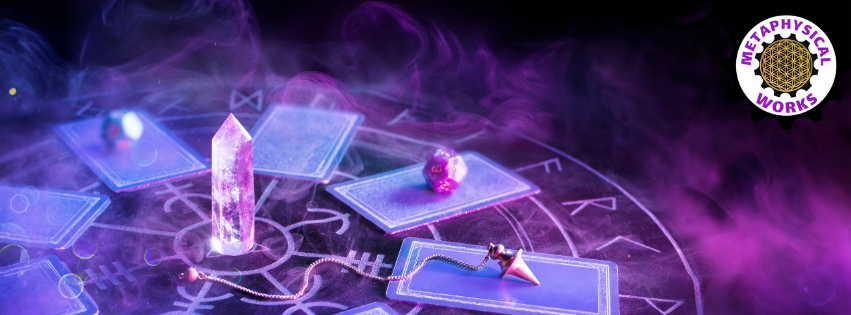Ancestor Veneration Across Cultures: Honoring the Dead Through Sacred Traditions
By Jesse Hudgins
Oct 7, 2025
Add a comment
A Universal Language of Connection
Across every continent and through every age, one sacred thread has bound humanity together: the honoring of those who came before us.
From the flickering glow of a single candle to the vibrant pulse of drums echoing through the night, people have always sought to bridge the space between the living and the dead. These practices transcend geography, language, and faith - revealing that remembrance is a universal act of love.
In the ancient temples of Egypt, families left offerings of bread and beer to nourish the ka, believing that a well-tended spirit would bless the living. In Japan, quiet morning rituals at home altars still invite ancestral guidance into daily life. In Mexico, Día de los Muertos transforms homes and cemeteries into places of celebration, where flowers and laughter guide beloved souls back to their families for one radiant night.
As the wheel of the year turns toward Samhain, when the veil between worlds grows thin, we feel this truth in our bones. The air carries a quiet hum - an invitation to pause, to listen, and to remember that every heartbeat is a continuation of the ones that came before it.
In this journey through the timeless art of ancestor veneration, we’ll explore the diverse traditions, ancient and modern, that keep ancestral wisdom alive. More than rituals, these are living expressions of gratitude and connection, reminders that in honoring our roots, we nurture our branches.
1. The Ancient Roots of Ancestor Veneration
Long before modern religions or organized societies, people looked to their ancestors for protection, guidance, and strength. Across the world, offerings of food, water, and fire symbolized gratitude and connection. These early rituals remind us that the practice of honoring those who came before is universal, embedded in our collective human story.
Key elements often found in ancient practices include:
- Offerings of sustenance: Food, water, incense, or flowers
- Sacred spaces: Shrines, altars, and burial grounds
- Community connection: Songs, dances, and collective storytelling
- Cycles of time: Seasonal rites marking the natural rhythm of life, death, and rebirth
2. Historic Traditions Across the World
Europe
-
Celtic Samhain - Ireland and Scotland
Samhain marked the end of the harvest and the start of the spiritual new year. Bonfires blazed on hills, offerings were left for spirits, and the community came together to honor the ancestors, asking for their protection through the dark winter. -
Roman Parentalia and Lemuria
The Parentalia festival in February honored familial spirits with offerings of bread and wine at family tombs, while Lemuria in May sought to appease restless spirits with nighttime rituals and offerings of beans for peace. -
Norse Blót - Scandinavia
In Viking traditions, Blót ceremonies honored gods, spirits, and ancestors through feasting, song, and offerings - often of mead or animal sacrifice - to ensure prosperity and guidance. -
Slavic Dziady - Eastern Europe
The Slavic Dziady, or “Forefathers’ Eve,” invited ancestral spirits to visit with feasts, songs, and prayers in their honor.
Africa
-
Ancient Egypt
In Egypt, ancestor veneration was woven into daily life. Families tended to household shrines and visited tombs with offerings to sustain the ka - the spiritual essence - ensuring harmony between the living and the dead. -
Yoruba Egungun - West Africa
The Egungun masquerades celebrate ancestors with drumming, music, and dance. Community members wear elaborate costumes to embody the spirits, bringing blessings and messages to the living. -
Zulu and Akan Traditions - Southern and West Africa
Libations of water, beer, or palm wine are poured onto the earth to invite ancestors into the space, asking for their protection, guidance, and wisdom.
Asia
-
Shinto Ancestral Worship - Japan
In Shinto households, ancestors are honored daily through kamidana or butsudan - small home altars where offerings of rice, water, and incense are made. -
Ancient Chinese Rites - Zhou Dynasty
As early as the Zhou Dynasty, Chinese families honored their ancestors with intricate ceremonies, incense offerings, and careful tending of family burial sites. -
Vedic Shraddha - India
In ancient India, Shraddha rituals honored ancestors through prayers, water offerings, and sacred fire ceremonies to support their journey and bless future generations.
Middle East & Indigenous Cultures
-
Mesopotamian Kispum - Ancient Mesopotamia
Families gathered regularly to make offerings of bread, water, and beer to ancestors, maintaining a strong bond with the departed. -
Indigenous American Practices - North & South America
Many Indigenous nations honored their ancestors with sacred fires, smudging, dance, and storytelling, keeping cultural memory alive. -
First Nations of Canada
Seasonal feasts and ceremonies continue to honor ancestors, weaving together reverence for land, lineage, and spirit.
3. Modern Traditions of Ancestor Veneration
The Americas
-
Día de los Muertos - Mexico
A vibrant celebration of life and death, Día de los Muertos features colorful ofrendas with marigolds, candles, favorite foods, and photos to welcome ancestors home for a night of joy and remembrance. -
Allhallowtide - Christian Europe
Encompassing All Hallows’ Eve, All Saints’ Day, and All Souls’ Day, these days are marked by prayer, candles, and visits to cemeteries to honor the departed. -
African Diaspora Practices
In the Americas, traditions such as Hoodoo, Vodou, and Santería blend African spiritual systems with local practices, keeping ancestral reverence central through offerings, drumming, and ritual work.
Asia-Pacific
-
Obon - Japan
Lantern-lighting ceremonies and Bon Odori dances guide ancestors home and celebrate their ongoing presence in family life. -
Qingming - China
Families visit ancestral tombs, clean the sites, and make offerings of tea, incense, and paper effigies to honor and sustain their loved ones. -
Pchum Ben - Cambodia
A 15-day festival where rice balls and prayers are offered to seven generations of ancestors to help them find peace. -
Chuseok - Korea
A harvest festival where families prepare traditional foods and hold charye ceremonies of gratitude and remembrance. -
Tết - Vietnam
The Lunar New Year includes offerings of fruit, flowers, and incense to welcome ancestors and seek their blessings for the year ahead. -
Hungry Ghost Festival - China, Taiwan, Malaysia, Singapore
Offerings of food, incense, and floating lanterns appease wandering spirits, ensuring peace and protection.
Africa & Islands
-
Famadihana - Madagascar
Known as the “Turning of the Bones,” this celebration involves rewrapping ancestors in fresh cloth, music, and dance - a joyful expression of connection and remembrance. -
Samoan and Polynesian Practices
Ancestors are honored through chants, offerings, and sacred gatherings that reaffirm family and spiritual ties. -
Māori Whakapapa - New Zealand
Genealogy, or whakapapa, is considered sacred. Reciting ancestral lines and preserving stories keeps the living connected to their lineage and land.
4. Universal Threads of Ancestor Magick
Despite differences in language, geography, and tradition, certain themes flow through every form of ancestor veneration:
- Remembrance: Keeping names and stories alive sustains the presence of those who came before.
- Offerings: Food, drink, flowers, music, and incense serve as bridges between the seen and unseen.
- Connection: Prayer, meditation, and divination open channels for guidance and love.
- Community: Shared rituals strengthen bonds and collective identity, uniting generations.
5. Bringing Ancestor Magick Into Your Practice
You don’t need elaborate rituals to honor your ancestors. Here are ways to begin:
- Create a Home Altar: Include photos, candles, natural elements, and offerings.
- Journaling or Storytelling: Record memories or write letters to your ancestors.
- Sacred Offerings: Light a candle or pour water in gratitude.
- Divination and Meditation: Use tarot, pendulums, or quiet reflection to connect.
- Practice Respect: Learn about traditions authentically and avoid cultural appropriation.
Final Reflections
Across centuries and civilizations, ancestor veneration reminds us of something both humbling and empowering: we are never truly alone. Every breath we take carries the echoes of those who walked this earth before us. Their resilience, their dreams, their lessons - all of it flows through our veins, anchoring us to the living story of humanity.
When we light a candle, prepare an offering, or whisper a prayer, we are not just performing a ritual - we are opening a dialogue with time itself. We are saying, I see you. I honor you. I carry you forward.
And in that act, something profound happens. The walls between past and present dissolve. The distance between this world and the next softens. In that sacred stillness, we find guidance, comfort, and strength - a reminder that love does not end with death, but transforms, enduring as long as it is remembered.
This Samhain, and in every season of remembrance, consider creating your own moment of connection. It can be as simple as a quiet breath of gratitude or as elaborate as an altar adorned with symbols of your lineage. What matters most is your intention - your willingness to honor the journey of those who came before and to carry their wisdom into your own life.
Because when we honor our ancestors, we also honor ourselves - and the legacy we will one day leave for those yet to come.
Thank you for reading and sharing this space with us.
Stay connected with Metaphysical Works - subscribe to our newsletter for rituals, guidance, and seasonal wisdom delivered straight to your inbox.
As we honor the thinning of the veil, don’t forget to Explore our Samhain Collection for candles, crystals, and tools crafted for this sacred season.
Follow us on Facebook and Instagram for inspiration and updates on our latest offerings.

